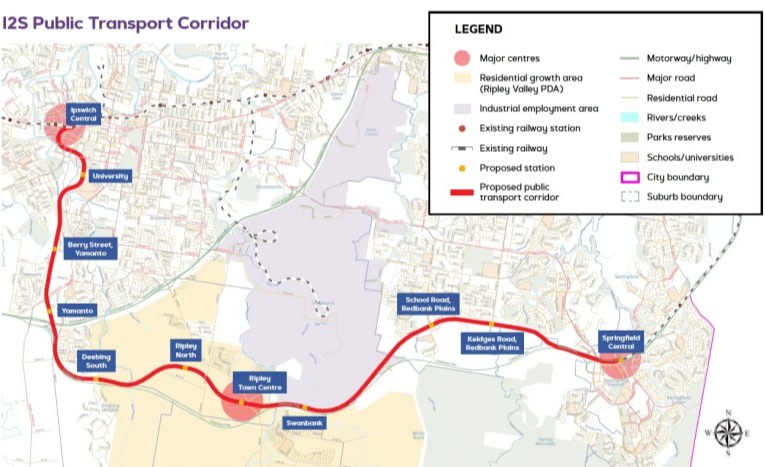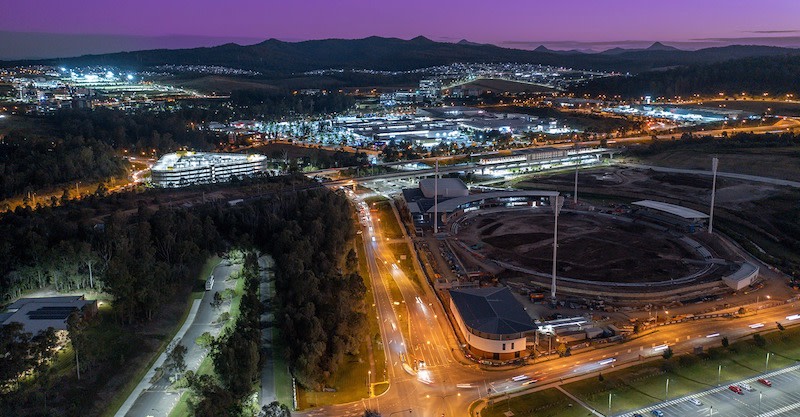Rail Call Grows Louder as Ipswich Population Skyrockets

A South-East Queensland council says its proposed rail line would unlock 20,000 homes as it grapples with a population tipped to more than double by 2046.
The Ipswich City Council has renewed calls for a 25km line between the city and Springfield Central, to be known as the Ipswich-to-Springfield Central public transport corridor or I2S. It first proposed the plan in 2006.
This year the council launched a campaign called We Can’t Wait in the run-up to the state election in Queensland, which is due to be held on October 26.
Ipswich mayor Teresa Harding said the line was needed to drive more housing in the area as demand rose along with Ipswich’s population, which is expected to hit 533,000 by 2046, a dramatic increase on the 251,000 population of 2023.
“Ipswich is now forecast to grow at a faster rate than any other council in Queensland over the next 20 years, with our population set to more than double in this time,” Harding said.
“Seventy per cent of the growth in Ipswich is occurring along this critical corridor, yet most of these booming suburbs are serviced by hourly bus services or not at all.”
Harding and other councillors believe the I2S would boost the delivery of 20,000 more homes in the area.
The proposal for the I2S includes nine stations connecting Ripley, Redbank Plains and Yamanto with Ipswich and Brisbane.
Swanbank, Ripley North, Deebing South, Springfield Central and the University of Queensland are the other proposed stations.
A temporary train station at Ripley Town Centre has been built by the Ipswich city councillors as part of the campaign.

The council said the I2S would be an alternative to cars for more than 200,000 people and take more than 68,000 cars off the road.
The Ipswich council secured up to $10 million through the South-East Queensland City Deal to carry out the preliminary evaluation and business case for the project.
There was no commitment to fund the construction of I2S at its estimated cost of $2 billion to $3 billion, which was a problem, Harding said.
“While Ipswich’s population continues to grow rapidly, there is no current commitment on the table to continue this project beyond planning and design and into the construction phase,” Harding said.
“There is a real risk that the planning for this critical piece of transport infrastructure will sit on the shelf until 2032 and beyond, despite the project already having the support of all levels of government.”
Without the I2S, the council estimates that the road network around Ipswich will fail by 2031 with average travel times increasing by 81 per cent.

It also estimates that the Ripley-to-Brisbane commute would increase to 2.5 hours by 2036 with more than $1 billion in lost productivity each year.
The campaign said the line would improve the national freight network, make new industrial land more accessible, create jobs and bolster economic growth, and alleviate regional road congestion.
Harding said that Ipswich had consistently received less than its share of funding, which was made clear by the Queensland Transport and Roads Investment Program (QTRIP)’s figures.
“QTRIP spells out what local governments across the state will be getting over the next four financial years—between now and 2027-28,” Harding said.
“In that period, the QTRIP allocation for Ipswich is just $198 million.
“This is despite our city being the epicentre of Queensland’s population explosion.
“In comparison, over that time, Logan next door will receive more than $1 billion, and Brisbane more than $3 billion.”












